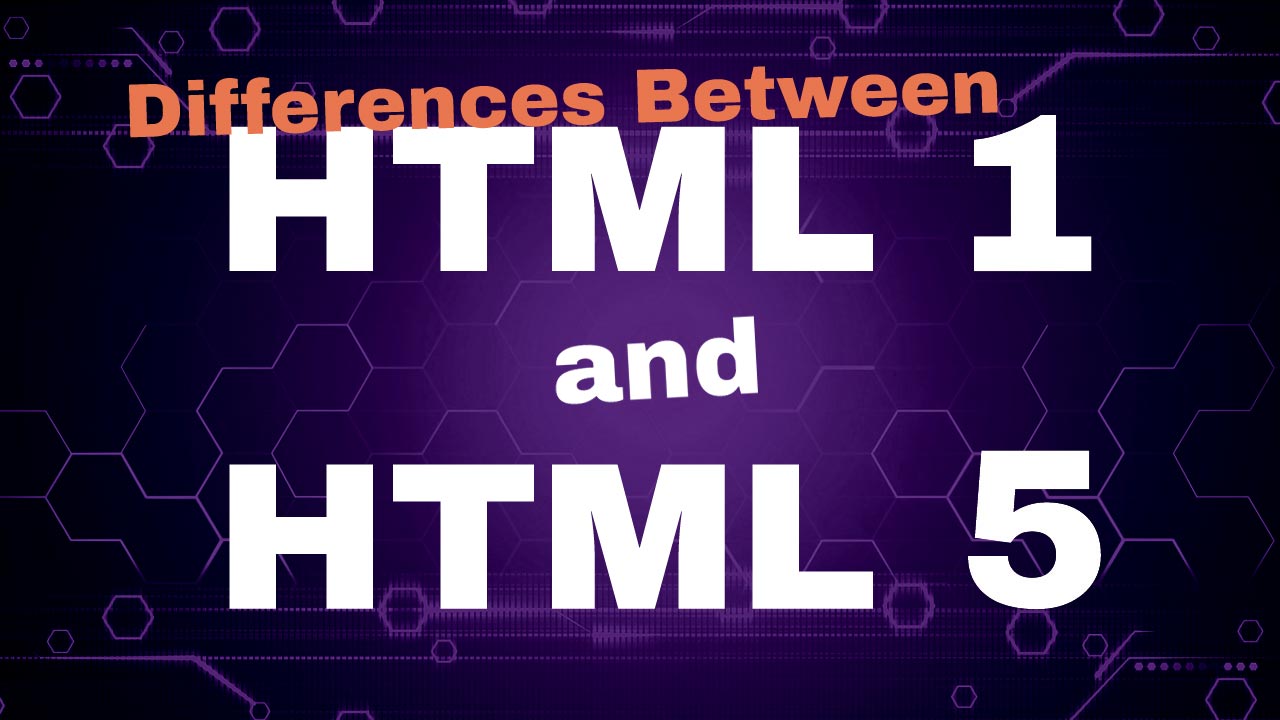HTML (Hypertext Markup Language) is a markup language used to create web pages. HTML has evolved over the years, with the latest version being HTML5. HTML1 was the first version of HTML, released in 1993, while HTML5 is the latest version, released in 2014. This article will explore the differences between HTML1 and HTML5, focusing on their features and capabilities.
Table of Contents
- HTML1 Features and Capabilities
- HTML5 Features and Capabilities
- Converting a Document from HTML1 to HTML5
- Frequently Asked Questions
- Conclusion
HTML1 Features and Capabilities
HTML1 had limited features and capabilities compared to HTML5. HTML1 had only 18 tags, which included:
- <html> – to start the HTML document
- <head> – to include the document header
- <title> – to specify the document title
- <body> – to include the document body
- <h1> to <h6> – to specify headings
- <p> – to specify paragraphs
- <a> – to create hyperlinks
- <img> – to insert images
- <ul> and <ol> – to create unordered and ordered lists
- <li> – to specify list items
- <br> – to create line breaks
- <hr> – to create horizontal lines
- <table> – to create tables
- <tr> – to specify table rows
- <td> – to specify table cells
- <form> – to create forms
- <input> – to create form input fields
- <textarea> – to create multi-line text input fields
HTML1 did not support multimedia elements such as audio and video, and it had limited support for scripting. This made it challenging to create complex web pages with dynamic content and interactive features.
HTML5 Features and Capabilities
HTML5 offers new features and capabilities that were not available in HTML1. HTML5 has over 100 tags, including many new tags that support multimedia elements such as audio and video.
Some of the new features and capabilities of HTML5 include:
Semantic Elements
HTML5 introduced new semantic elements that provide more meaning to the content of a web page. These elements include:
- <header> – to specify the document header
- <nav> – to specify the document navigation
- <main> – to specify the main content of the document
- <article> – to specify an article in the document
- <section> – to specify a section in the document
- <aside> – to specify content that is not part of the main content
- <footer> – to specify the document footer
Using semantic elements can improve the accessibility and search engine optimization (SEO) of a web page.
Multimedia Elements
HTML5 introduced new multimedia elements that allow developers to embed audio and video directly into a web page without the need for third-party plugins. These elements include:
- <audio> – to embed audio content
- <video> – to embed video content
Using multimedia elements can enhance the user experience of a web page.
Canvas Element
HTML5 introduced the canvas element, which allows developers to create dynamic graphics and animations. The canvas element provides an API (Application Programming Interface) for drawing shapes, lines, and text, making it easy to create complex graphics and animations.
Local Storage
HTML5 introduced local storage, which allows web pages to store data on the user’s computer. This can be useful for storing user preferences, caching data, and offline web applications.
Geolocation API
HTML5 introduced the Geolocation API, which allows web pages to access the user’s location. This can be useful for location-based applications and services.
Web Workers
HTML5 introduced web workers, which allow web pages to run scripts in the background, without interrupting the user interface. This can be useful for performing complex tasks that require a lot of processing power.
Drag and Drop API
HTML5 introduced the Drag and Drop API, which allows users to drag and drop elements on a web page. This can be useful for creating interactive user interfaces and making it easier for users to interact with a web page.
Improved Form Elements
HTML5 introduced new form elements and attributes that make it easier to create forms and improve their accessibility. Some of the new form elements and attributes include:
- <input type=”email”> – to specify an email input field
- <input type=”url”> – to specify a URL input field
- <input type=”date”> – to specify a date input field
- <input type=”range”> – to specify a range input field
- <input type=”color”> – to specify a color input field
- <input type=”search”> – to specify a search input field
- <input type=”tel”> – to specify a telephone input field
- <input type=”number”> – to specify a numeric input field
- <input type=”password”> – to specify a password input field
- <label> – to associate a label with a form element
- <placeholder> – to provide a placeholder text for form elements
- <required> – to specify that a form element is required
Converting a Document from HTML1 to HTML5
Converting a document from HTML1 to HTML5 can be a challenging task, as HTML5 has many new features and capabilities that were not available in HTML1. However, there are several steps that can be taken to make the conversion process easier:
Validate the HTML1 Code
Before converting a document from HTML1 to HTML5, it is important to validate the HTML1 code using an HTML validator. This will help identify any errors or deprecated tags that need to be updated.
Replace Deprecated Tags
HTML5 has deprecated several tags that were available in HTML1, such as <font>, <center>, and <strike>. These tags should be replaced with their equivalent HTML5 tags or CSS styles.
Add Semantic Elements
HTML5 introduced several new semantic elements that provide more meaning to the content of a web page. Adding these elements to the document can improve its accessibility and SEO.
Add Multimedia Elements
HTML5 introduced new multimedia elements that allow developers to embed audio and video directly into a web page. Adding these elements can enhance the user experience of the document.
Update Form Elements
HTML5 introduced new form elements and attributes that make it easier to create forms and improve their accessibility. Updating the form elements in the document can make it more user-friendly.
Test the Document
After converting the document to HTML5, it is important to test it thoroughly to ensure that it works correctly in different web browsers and devices.
Frequently Asked Questions
Conclusion
HTML has evolved significantly over the years, with HTML5 being the latest version. HTML1 had limited features and capabilities compared to HTML5, which has over 100 tags and supports multimedia elements, canvas graphics, local storage, and other features. Converting a document from HTML1 to HTML5 can be a challenging task, but following the steps outlined in this article can make the process easier. HTML5 is the future of web development, and developers should be familiar with its features and capabilities to create modern and dynamic web pages.








